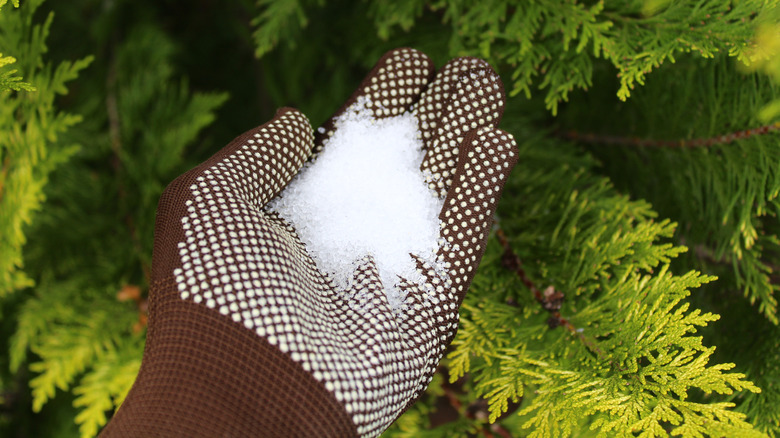Discover the Details Plants That Are Negatively Influenced by Epsom Salt Application
Epsom salt, a preferred family remedy for different horticulture problems, is commonly praised for its helpful results on plant development. Not all plants react favorably to its application. Understanding the certain plants that can be negatively impacted by Epsom salt is crucial for any kind of garden enthusiast looking to enhance their plant treatment routine. Roses, tomatoes, peppers, azaleas, and rhododendrons are simply a couple of instances of plants that may not react well to Epsom salt. The factors behind these negative results and how to minimize them are necessary expertise for maintaining a flourishing garden.
Roses

Roses, particularly conscious modifications in their environment, can be negatively influenced by the application of Epsom salt. While Epsom salt is generally utilized as a fertilizer to advertise plant development and enhance blooming, roses are one of the plants that do not react well to its application. The high magnesium content in Epsom salt can disrupt the uptake of other important nutrients by the rose plants, leading to shortages that materialize as yellowing fallen leaves or stunted development.
:max_bytes(150000):strip_icc()/GettyImages-1317990269-f9c37b77324f4095b1916657ff7b26fb.jpg)
Tomatoes
While Epsom salt is usually touted as a solution for numerous plant concerns, including blossom end rot in tomatoes, its application can lead to detrimental end results if not made use of carefully. Too much Epsom salt, which is magnesium sulfate, can interrupt the delicate nutrient equilibrium required by tomatoes, potentially leading to deficiencies in various other important nutrients like calcium. When taking into consideration the usage of Epsom salt on tomatoes, it is crucial to adhere to advised application rates and dirt screening to stop unintentional effects on the overall health and wellness and productivity of these cherished garden plants.
Peppers
Peppers, respected for their numerous colors and levels of spiciness, can demonstrate sensitivity to adverse effects from Epsom salt when not applied with care and consideration for their particular nutritional demands. what plants don't like epsom salt. Peppers, belonging to the Solanaceae family, need a fragile equilibrium of nutrients to thrive. While Epsom salt is understood to improve magnesium levels in plants, too much application can disrupt this equilibrium, causing negative impacts on pepper plants
When peppers are revealed to high degrees of magnesium from Epsom salt, it can disrupt the plant's capacity to absorb various other necessary nutrients like calcium and potassium. This inequality might materialize in signs and symptoms such as leaf staining, stunted growth, and decreased fruit manufacturing. In addition, the extreme magnesium can modify the soil pH, more exacerbating nutrient uptake concerns for peppers.

Rhododendrons
Given the sensitivity of specific plant species to inequalities created by Epsom salt, it is vital to think about the impact on Rhododendrons, which also call for certain nutrient degrees to grow. Rhododendrons are acid-loving plants that choose acidic dirt conditions with a pH variety between 4.5 and 6.0. Epsom salt, chemically known as magnesium sulfate, can alter the soil pH and interrupt the delicate balance of nutrients crucial for Rhododendron wellness.

To preserve the optimal growth and health of Rhododendrons, it is important to avoid the unplanned use Epsom salt and instead focus on giving the details acidic soil conditions and nutrients that these plants need for thriving.
Azaleas
These preferred blooming plants are commonly located in landscapes, parks, and gardens due to their charm and versatility. While his explanation Epsom salt is generally used as a treatment for magnesium shortage in plants, its application to azaleas can have unfavorable impacts.
Azaleas favor slightly acidic soil problems, and an excess of magnesium from Epsom salt can disrupt this balance, leading to nutrient discrepancies and potential toxicity issues. The inaccurate application of Epsom salt can result in stunted growth, yellowing of leaves, and total decline in the wellness of azaleas.
Final Thought
Finally, it is essential to be knowledgeable about the details plants that can be negatively affected by the application of Epsom salt. Roses, tomatoes, rhododendrons, peppers, and azaleas are some examples of plants that may not take advantage of Epsom salt and can also experience harm. It is essential to research and comprehend the needs of each plant helpful hints types prior to making use of Epsom salt as a plant food to ensure their health and wellness and well-being.
Comprehending the specific plants that can be adversely affected by Epsom salt is important for any gardener looking to enhance their plant care regimen. While Epsom salt is frequently utilized as a plant food to promote plant development and improve blooming, roses are one of the plants that do not react well to its application.Excessive use of Epsom salt can also result in an accumulation of salts in the soil, leading to root damages and dehydration of the rose plants. While Epsom salt is understood to enhance magnesium degrees in plants, extreme application can disrupt this stability, leading to negative effects on pepper plants.
The high salt material in Epsom salt can also dry out Rhododendron origins, triggering additional tension and damage to the plant. (what plants don't like epsom salt)